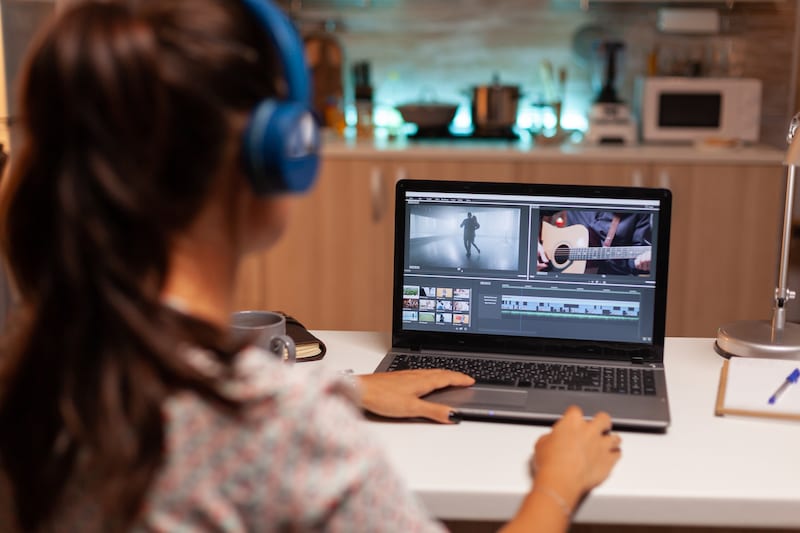YouTube is one of the most popular sites on the internet, and optimizing your YouTube SEO is very important. Just like Google, there are ways to help YouTube rank your video higher than others. Gathering views can take a few steps, but it will be worth it in the end. Whatever you are hoping to do with your channel, learning how to optimize your YouTube SEO will be helpful. This article is going to focus on tips to improve your YouTube SEO to give you more views for your videos.
Using YouTube SEO to Your Advantage
- 1 Using YouTube SEO to Your Advantage
- 2
- 3 Video Titles and Keywords
- 4 Share Links
- 5 The Little Things Matter
- 6 Tools to Optimize Your YouTube SEO
- 7 Google and YouTube Analytics
- 8 Tips For Bringing Viewers to Your Videos
- 9 Frequently Asked Questions About YouTube SEO Optimization
- 9.1 1. How long does it take to see results from YouTube SEO optimization?
- 9.2 2. What’s the ideal video length for YouTube SEO performance?
- 9.3 3. How many tags should I use, and what types of tags work best?
- 9.4 4. Should I create custom thumbnails, and what makes a good thumbnail?
- 9.5 5. How important are closed captions for YouTube SEO?
- 9.6 6. What’s the best way to optimize my video descriptions for SEO?
- 9.7 7. How can I use playlists to improve my YouTube SEO?
- 9.8 8. How should I promote my YouTube videos on other social media platforms?
YouTube is a great place to market your products and services. With the popularity comes millions of companies marketing their own businesses. In order to give your videos a chance at a high rating, keywords are crucial. Just like a website, these keywords can help the YouTube algorithm pick your video to suggest to its users. Find out what keywords match what your video is trying to say by using the YouTube search bar. Learn what users are searching for, then use that as your title. If this is not working, find YouTube videos like yours and see what works and what doesn’t. Look at what your competitors are doing and mimic that in your own title, while adding your own spin.
Video Titles and Keywords
It is important to use a short and sweet title. If it is more than 60 characters, YouTube could cut part of the title off because it does not fit the dimensions. Important rules to follow are using focus keywords and show that you are solving a problem in the short title.
Thumbnails are Crucial
Make sure to have a good thumbnail. A thumbnail is a photo from a portion of your video which is displayed by your video’s title. Choosing this is crucial because plenty of users will click on videos based on the picture alone. Make it creative and unique. This is also the way to show what your video is about. Custom thumbnails are extra helpful, but there is a catch: you have to be verified. You can become verified by contacting YouTube, so give it a try. The best images will also be around 1280 x 720 pixels. Save it as a 2MB or smaller using .png, .jpg, .gif, or .bmp type files.
The Importance of Tags
Tags are a vital part of the SEO for YouTube as well. This will help you gather more views. Never use unnecessary tags or popular tags that do not have anything to do with your video. If you do, there is a good chance YouTube could penalize you. Another SEO rule of thumb to use around 10 to 12 tags per video.
Categorizing Tags
Categorizing your video goes hand in hand with tags. For the categories you are thinking of using, do some research. What are the popular videos doing? Are the audiences following certain videos collectively? How can your video match that, but show something unique? Look for qualities that are shared throughout popular videos that you can adopt. These could be the length of the video, type of graphics, production quality, etc. Using this kind of research can increase your traffic.
Make it Count
The description placed right below the video is a great place to use keywords as well. This will help out your YouTube SEO by providing a better idea of what the video is about. Starting out your description with keywords is encouraged. It is important to remember that YouTube only shows the first 10 characters before the rest is cut off. The user will have to manually click the “show more” button to read the rest, so those first 10 characters are the most important. In total, the description can reach up to 1,000 characters.
If you have other social media or a website you want to share with your consumers, insert links into your video descriptions. Inserting links to your channel or linking other stand-alone videos will show YouTube that you are knowledgeable about your brand. Similarly, embedding your video’s link in other posts or websites is another way to increase views. If you have a blog or website, make sure to find ways to post it in there too. If you have social media accounts, place it in your biographies. Place it as a link in the description of other videos you make. This can help increase traffic to your videos.
Links in Other Forms
This goes along with a little icon at the top of the YouTube video. It is a little “i” in a white circle in the right corner of the video. This is perfect for showing off your other videos and channel. This icon can be used for multiple purposes. These include using it as marketing for another channel or other videos. This could be used to link fundraisers or donations and even funding from viewers. It is also helpful to link to an external site like a blog or webpage. The icon can also be used as a chance to poll your viewers. They can tell you what is working for the video, what they dislike, and what they would like to see. This can help bring the same viewers back over and over if you decide to take suggestions.
The Little Things Matter
There are multiple small things you can do to optimize your YouTube SEO. These things really do add up and make a difference!
Comments
Comments can improve your YouTube SEO by increasing your popularity. After posting your video, make an effort to start a conversation in the comments. More comments show YouTube that the video is becoming popular.
Closed Captioning
The closed captions are a great tool as well. These are detected by the YouTube algorithm and allow for SEO optimization. You can make your own captions to get it right, as sometimes YouTube’s automatic captioning can contain mistakes. The way to make captions for your video is by going to the video manager on YouTube. Click on videos, then the drop-down arrow next to the edit button, and finally click the Subtitles/CC tab. Another good idea is to translate the video into other languages to take the video global.
Edit the filename
A great way to maximize your YouTube SEO is by editing the filename to reflect the title of the video. This will help YouTube learn what your video is about and possibly help the rankings.
Use a Mailing List
Creating an emailing list can also help your popularity. Create a mailing list so viewers can reach your content through other ways. Email has proven to bring more traffic to a video, so this is definitely one to consider.
Playlists
Creating playlists can be helpful for your YouTube SEO. If you make these playlists that link videos together, then also make sure you use appropriate keywords to optimize the video SEO. This will also allow viewers to see more of your videos in a way that requires less work.
Make It the Right Length
Make sure to find the appropriate video length. YouTube is competing with other TV sources, so they do not want short videos. The goal is to keep viewers on the page for long periods of time and this is good for your videos as well. The minimum length should be about five minutes. However, don’t try and stuff it with unnecessary material, that might make you lose viewers.
Tools to Optimize Your YouTube SEO
There are plenty of platforms and sites to use that can help your YouTube SEO. To help with keywords, there are sites like Ahrefs Keyword Explorer, Ubersuggest, or Google Trends. Canva is also a great place to create thumbnails to attract viewers.
Planning sites
Other sites like Hubspot Content Strategy will allow for proper planning and show you what is related to the videos you have created. Using VidIQ Vision will help you study other videos and find out why they are doing well. This goes along with Cyfe which tracks how well your videos are doing. TubeBuddy will help you manage your channel and even help you promote the content.
Using Social Media Promotion
Promoting content is very important and social media is the best tool for that. Some of the most important and obvious sites include Facebook and Twitter. Facebook is known as one of the best sharing options. Users on this platform tend to watch longer than other sites, so your video has a chance at more screen time. Twitter has a great engagement rate and allows for a larger number of views on your videos.
Other social media sites that are more surprising but are equally helpful for views are LinkedIn and Quora. LinkedIn is known for bringing in more engagement than other platforms. Quora too, was made to answer questions with users looking for detailed answers. That is a great place to insert “How-To” videos or anything that answers questions.
Google and YouTube Analytics
In other ways, YouTube and Google Analytics are going to be very important for using your YouTube SEO. You can find out every detail of how long a user watches the videos, how many users the video reaches, and how long the viewers are engaged. In doing this, you can learn so much more about your audience. You can even see how much revenue the videos are bringing in all under the YouTube Help page on Google.
Tips For Bringing Viewers to Your Videos
Beyond keywords and descriptions, the quality of the video matters. This will help keep the viewer interested and see the effort in the product. This might even mean viewers come back to your channel. There are cheap ways to make this happen and it can begin with your smartphone. Grab a tripod, some lights to highlight the subject, and a microphone to get started. Good quality also means a nice backdrop. This could be a green screen, beautiful scenery, or anything that creates an interesting setting.
Like, Comment, and Subscribe
Make sure to have a great beginning and ending. The ending screen is crucial because this is traditionally when the channel asks for subscriptions or links other videos. A nice image or something subtle to end on helps promote the channel and videos. Feel free to link other videos during this end cut or link your channel. Do not be afraid to be upfront with asking for subscriptions, likes, or comments on the videos.
Marketing Your Channel
Try to find opportunities to partner with channels that compliment yours. Avoid using channels that compete with your product. Interviewing on other channels can also bring traffic to your videos. Taking the time to perfect old videos on your channel to make the page look cohesive will also show effort to the subscriber.
Creating Relationships
It is key to cultivate a relationship with your subscribers. This will keep them coming back and allow for more views on videos. Try to publish on a regular schedule because subscribers will be counting on that. If there are no regular uploads, subscribers will not check your channel and you can lose views.
Begin Promoting Your Channel
Optimizing your YouTube SEO can be done in many different ways. Always learn from others and find ways to stand out from your competitors. Try to optimize the content in a timely manner, because about two days after the publishing date, it is hard to recover if it has been done badly. Check your analytics pages to see how the channel is doing. Make sure to use keywords wherever possible. Try to engage with subscribers in the comments and through social media. Find ways to improve your content to increase traffic. Begin this process by finding more ways to gain subscribers and learn from others.
Frequently Asked Questions About YouTube SEO Optimization
1. How long does it take to see results from YouTube SEO optimization?
YouTube SEO results typically become visible within 2-4 weeks, though significant improvements may take 2-3 months of consistent optimization. Initial changes like improved titles, descriptions, and thumbnails can impact views within days, while broader algorithmic recognition of your channel’s authority takes longer. The first 48 hours after publishing are crucial – this is when YouTube determines initial performance and decides whether to promote your video further. Consistency is key: regular uploads with proper optimization compound over time. Track your analytics weekly to identify which optimization strategies work best for your content and audience, then double down on successful tactics while refining less effective approaches.
2. What’s the ideal video length for YouTube SEO performance?
While the minimum recommended length is around 5 minutes to satisfy YouTube’s preference for longer content, the ideal length depends on your content type and audience retention. YouTube favors videos that keep viewers on the platform longer, so focus on maximizing watch time rather than hitting a specific duration. Educational content often performs well at 8-15 minutes, while entertainment might succeed at 3-8 minutes. Monitor your analytics to find the sweet spot where you maintain high audience retention throughout the video. A 10-minute video with 70% retention is better than a 20-minute video with 30% retention. Quality and engagement matter more than raw length.
Use 10-12 relevant tags per video for optimal YouTube SEO performance. Start with your primary keyword as the first tag, then include variations, related terms, and broader category keywords. Mix specific long-tail tags (“how to optimize YouTube thumbnails”) with broader terms (“YouTube SEO”). Include your brand name and video series tags if applicable. Avoid irrelevant popular tags, as YouTube may penalize videos for tag spam. Research competitor tags using tools like TubeBuddy or VidIQ to identify effective keywords in your niche. Remember that tags are just one ranking factor – focus on creating tags that accurately describe your content and help YouTube understand your video’s context.
4. Should I create custom thumbnails, and what makes a good thumbnail?
Yes, custom thumbnails are crucial for YouTube SEO and can significantly impact click-through rates. Custom thumbnails perform much better than auto-generated ones, but you’ll need a verified YouTube account to use them. Create thumbnails at 1280×720 pixels, keep file size under 2MB, and use .jpg, .png, .gif, or .bmp formats. Effective thumbnails include bold, readable text, high contrast colors, close-up faces with emotions, and clear visual representation of your content’s value. Avoid clickbait that doesn’t match your video content, as this hurts retention and long-term performance. Test different thumbnail styles and monitor click-through rates in YouTube Analytics to optimize your approach.
5. How important are closed captions for YouTube SEO?
Closed captions are very important for YouTube SEO as they provide searchable text that helps YouTube understand your content better. YouTube’s automatic captions often contain errors, so uploading accurate custom captions can improve your video’s discoverability for relevant keywords. Captions also make your content accessible to deaf and hard-of-hearing viewers, expanding your potential audience. Additionally, offering captions in multiple languages can help your videos rank for international searches. To add custom captions, go to YouTube Studio, select your video, click “Subtitles,” and upload your caption file or manually enter text with proper timing.
6. What’s the best way to optimize my video descriptions for SEO?
Start your description with your most important keywords in the first 125 characters, as this appears in search results and before the “show more” expansion. Include your target keyword naturally in the first sentence, then provide a detailed description of your video content using related keywords throughout. Add timestamps for longer videos, include relevant links to your website and social media, and use a consistent format across your channel. Your description can be up to 5,000 characters, so use this space to provide value while incorporating SEO keywords naturally. Include a call-to-action encouraging likes, comments, and subscriptions.
7. How can I use playlists to improve my YouTube SEO?
Playlists are powerful for YouTube SEO because they increase total watch time and keep viewers on your channel longer. Create themed playlists around specific topics using keyword-rich titles and descriptions. This helps YouTube understand your content categories and can improve rankings for playlist-related searches. Playlists also appear in search results separately from individual videos, giving you additional visibility opportunities. Organize your content logically, put your best-performing videos first to hook viewers, and regularly update playlists with new relevant content. Cross-promote playlists in your video descriptions and end screens to encourage binge-watching sessions.
Each social media platform requires a different approach for optimal YouTube video promotion. On Facebook, post your video natively first for algorithm preference, then share your YouTube link in comments. Twitter works well for real-time promotion with relevant hashtags and engaging captions. LinkedIn is excellent for professional or educational content with detailed context about the video’s value. Instagram Stories and posts can tease video content with compelling visuals that drive traffic to YouTube. Always customize your messaging for each platform rather than using identical posts everywhere. Include clear calls-to-action directing followers to watch the full video on YouTube, and engage with comments to boost social signals.









Contact Us today!